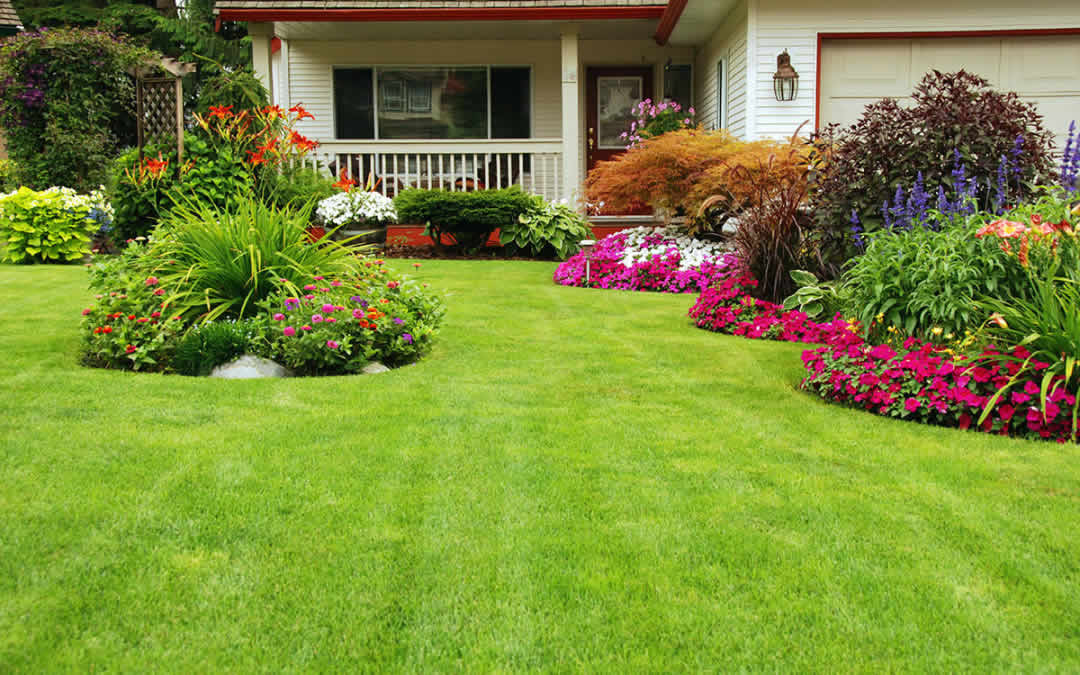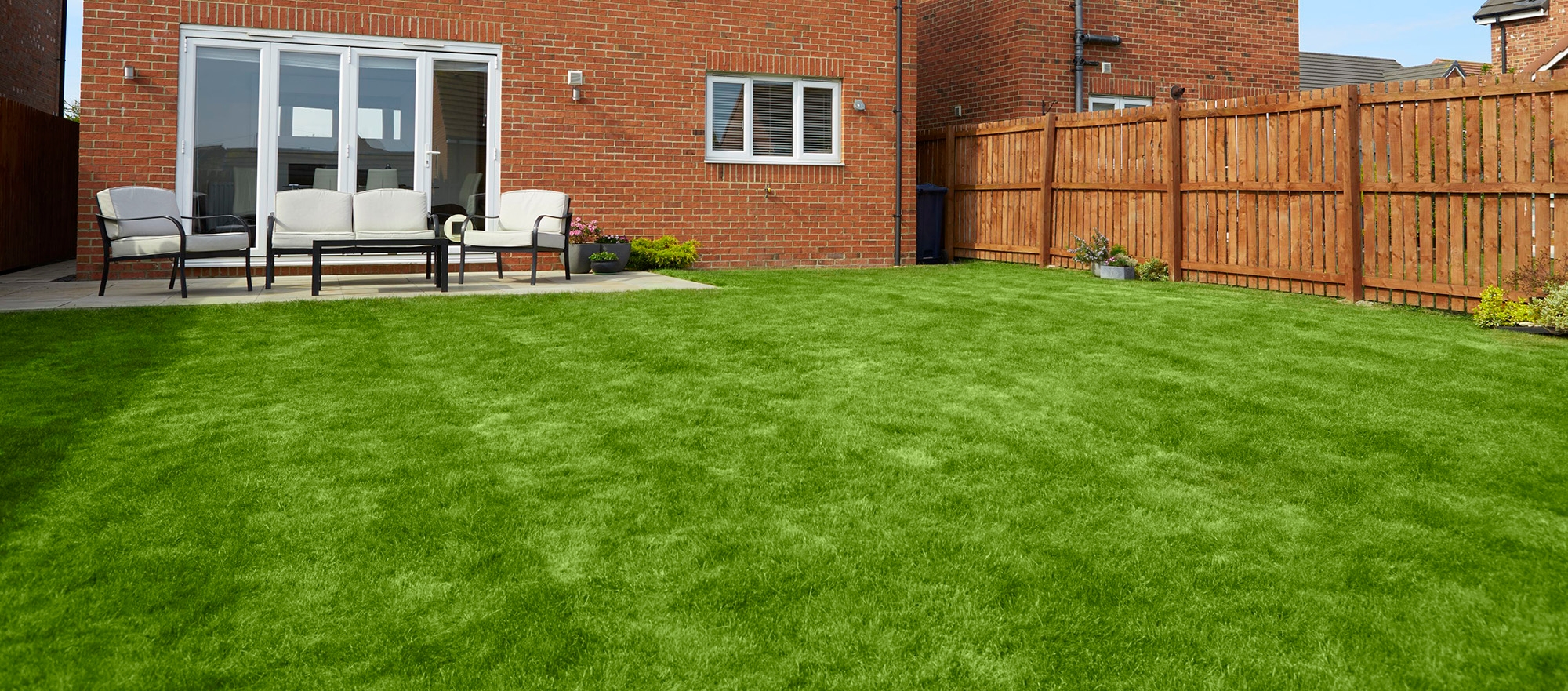Summer lawns are pretty easy to maintain. Regular maintenance, mowing, and fertilisation are the critical components of lush, healthy growth. For best results, however, these tasks should be performed all year round, not just during the summer months. Before beginning to wind down for the colder winter weather, most lawn care tasks are typically performed in early to late spring and early autumn.
A guide through the seasons
The best way to fix any bare spots on your lawn after a long winter or a hot summer is to aerate, fertilise, remove weeds, and oversee your lawn in the early spring. You should sharpen your lawn mower’s blades or replace them in the late spring to start mowing your lawn and gradually lower the grass height until it is as long as it is comfortable for you.
In the summer, mow your lawn weekly, but only cut a small amount of the grass’ height, so the clippings will remain on the lawn and make it look untidy and yellow. The blades will tear the grass instead of properly cutting it, making your lawn look untidy and possibly turn yellow. During their decomposition, they’ll break down and fertilise your lawn, so water it weekly or even more frequently if it’s particularly hot.
Let your lawn grow a bit longer in autumn, and aerate it, especially in areas where it has been worn during the summer. In addition to aerating your lawn, add a slow-release autumn fertiliser. Aerating your lawn will loosen compacted soil, allowing air, water, and nutrients to penetrate more easily.
Among other tips for growing a green lawn in the summer are:
Trim, weed and fertilise your lawn
Keep your lawn trimmed between two and three inches (5 and 7 centimetres) tall to promote healthy grass growth and prevent long and patchy lawns.
Ensure to water your lawn deeply only once a week instead of lightly and frequently. This will help your lawn’s roots grow deeper and more drought-resistant.
To promote healthy growth, fertilise your lawn every six to eight weeks with a balanced fertiliser.
The weeds on your lawn are competitive for nutrients and water, so if left unattended, they can cause your lawn to look patchy and unhealthy. Pull them out by hand or use a herbicide to control them. Removing weeds from your garden as soon as possible is better because warm spring and summer weather will encourage them to grow even more.
Scarify your lawn
In general, it is best to scarify your lawn in the early spring or early autumn when the grass is actively growing, depending on the type of grass and the climate in your area. To scarify your lawn correctly, you must determine how much thatch is building on it and how often you need to do so. Water, air, and nutrients cannot reach the roots if thatch is more than half an inch/13 millimetres thick. Thatch is a layer of dead grass, roots, and other organic matter accumulating on the soil. In general, you should scarify your lawn at least once a year. However, if your lawn has a lot of thatch, you may need to scarify more frequently. You should be careful not to over-scarify your lawn, as it can damage it. When you scarify too frequently or aggressively, your lawn becomes more susceptible to disease and weed infestation. Monitor your lawn regularly and scarify only as necessary.
To protect your lawn from excessive heat and sun damage, plant trees or install a shade sail if your yard is in a hot, sunny area.
Keep your lawn healthy
Whenever possible, use organic lawn care products. Organic lawn care products are safer for the environment and your family, as well as beneficial soil microorganisms.
If you have a lawn that receives excessive foot traffic, you may cause compaction and damage to the grass.
Maintain a regular lawn maintenance schedule to prevent fallen leaves and debris from blocking sunlight and air.
In addition to chemical options, some perform regular lawn maintenance. DIY natural solutions can be used to control weeds and fertilise your lawn without damaging the environment or causing harm to your family.
In addition to being a natural pre-emergent weed control, Corn Gluten Meal is a herbicide that prevents weed seeds from germinating. As well as being safe for children and pets, it reduces chemical herbicide use, increases soil nitrogen content, and is a good option for treating weeds before they become established. Nevertheless, it is more effective if applied at the right time, and it can sometimes prevent plants from growing.
Use natural ingredients
Vinegar is a natural post-emergent weed control and herbicide that works by drying out weed leaves and roots. It can be used on your lawn to kill weeds that have already emerged. In addition to being safe and easy to apply, it can also harm desirable plants. However, it may have to be used more frequently, like corn gluten meal.
It has been used for hundreds of years to fertilise outdoor plants. Epsom salt is an excellent natural fertiliser for outdoor plants. Magnesium and sulfur are essential nutrients for healthy plant growth, so they are excellent sources. In addition to being inexpensive, safe for children and pets, and improving soil structure, it doesn’t build up in the soil over time, so it’s safer than chemical supplements. However, salt accumulation in the soil can occur if it is overused.
Make your own compost
Food scraps, yard waste, and other organic materials can make compost a popular natural fertiliser. Compost is packed with nutrients and can be used to improve the soil’s fertility. In addition to being safe for children and pets, it improves soil structure, reduces waste, and is a very eco-friendly choice. However, it does take time and effort to make and may need to be supplemented sometimes.
In addition to being a great source of trace minerals and other nutrients, seaweed is an excellent natural fertiliser that can be applied both as a liquid fertiliser and as mulch on your lawn. It has the advantages of being rich in micronutrients, improving soil structure, and being safe for pets and children. In addition to being hard to find, it may have a strong, unpleasant smell.
How can lawn mistakes be costly?
Several common lawn mistakes people make can prove costly and detrimental to their lawn’s health. Moss and weeds are among the most common lawn problems that homeowners face, in part because of poor lawn care.
Overwatering your lawn
In addition to causing grass roots to rot and making them susceptible to disease, overwatering can also cause shallow root systems, making them more vulnerable to drought. It is also important to avoid overwatering your lawn during periods of high humidity, as it creates a damp environment where moss likes and thrives. Water your lawn thoroughly but infrequently, and avoid it during hot weather.
It can also make your lawn susceptible to pests and diseases if underwatered. In contrast, your lawn will turn brown and dry out if it is overwatered.
Mowing your lawn too short
Mowing your lawn too short will weaken the root system and make it vulnerable to droughts, diseases, and weeds. If you remove too many leaves, the grass cannot function properly and produce food. Furthermore, it may also cause damage to the crown, which will affect its recovery or even cause death. To prevent that, you should not remove more than one-third of one grass blade at a time and keep it at a healthy height.
The lawn grass will go into shock if you cut it too frequently, for example, every two to three weeks. If you do not mow regularly, you are more inclined to cut off too much of the grass, causing the same outcome. Mowing your lawn once a week prevents stunted growth and moss from taking over.
Neglecting the soil quality
Neglecting soil health can cause nutrient deficiencies, pH imbalances, and other problems for the grass. If your lawn has poor soil, this can create an ideal environment for moss and weeds to thrive. Ensure your lawn soil is tested every spring and supplements with nutrients if necessary. Your lawn soil should be neither too acidic nor too alkaline in pH. By sprinkling a little lime or sulphur on top, you can quickly fix the problem.
It can be damaging to the grass and to the soil to use the wrong type and amount of fertiliser. Overfertilising can also harm the grass and kill beneficial insects. As a result, it is easier for moss and weeds to grow. To prevent this, always read and follow the label instructions carefully before using any product.
Planting the wrong grass
You may have a weak lawn, easily susceptible to disease if you plant a grass species unsuited to your area’s climate or soil type. Moreover, if your lawn is growing warm-season grasses, like Bermuda and Zoysia, scarify it in late spring or early summer, as soon as it starts to grow but before it becomes hot. If you have cool-season grasses like Kentucky Bluegrass or Fescue, scarify them in the spring or fall when temperatures are cooler. To avoid causing damage to your lawn, avoid scarifying it during periods of drought or extreme heat. To ensure that your property recovers quickly after scarifying, ensure it is well watered before and after.
Improper drainage
Neglecting proper drainage can damage grass and promote weed growth and disease spread. Poor drainage can cause waterlogging, damaging grass and promoting weed growth.
Due to the lack of air spaces between soil particles, compacted soil can prevent proper water and nutrient absorption. To prevent that, spike your lawn regularly with a lawn spiker, an aerator shoe or even a fork to prevent your lawn from retaining air and prevent proper water drainage, which will encourage moss and weed growth.
Conclusion
Having a lawn has never been an easy task. You need to take care of it all the time, all year round. However, with the right knowledge, you can ease the process for yourself and the lawn. To keep up with the latest trends in gardening and landscaping, always consult with professionals or subscribe to a favourite magazine.



